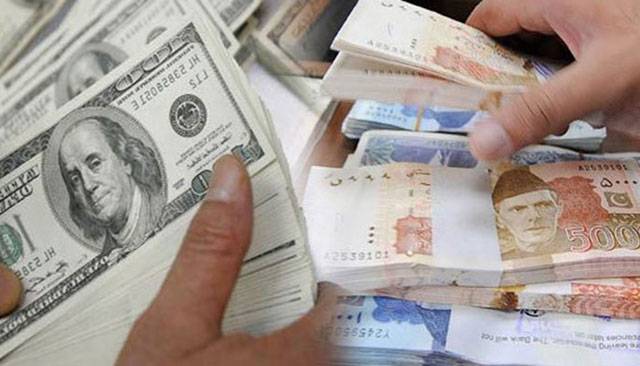ISLAMABAD - Moody's Investors Service on Tuesday said that the Pakistani rupee will likely face ongoing depreciation pressures against the US dollar after a 5 percent downward adjustment last month.
Pakistani rupee on Monday touched historic level of Rs113. “If the rupee depreciates markedly further, the country's central bank will face the difficult challenge of anchoring inflation expectations at moderate levels. The government's debt affordability would also likely weaken further”, stated the Moody's Investors Service.
However, over the longer term, allowing the rupee to reflect currency fundamentals would reduce the drain on Pakistan's (B3 stable) foreign exchange reserves and enhance the sovereign's capacity to absorb shocks to trade and/or capital flows. Moreover, if inflation expectations are anchored and the government's liquidity risks do not rise sharply, currency flexibility would also enhance Pakistan's price competitiveness, given the current overvaluation of the PKR. Greater exchange rate flexibility would also improve the economy's shock absorption capacity by incentivizing the reallocation of resources between the tradable and non-tradable sectors of the economy.
Moody's analysis is contained in its recently-released report on Pakistan titled "Government of Pakistan - Further currency depreciation would raise financing costs and inflation short term, enhance competitiveness longer term".
Moody's explains that the rupee depreciated around 5% against the USD, with most of the weakening occurring over three trading days between December 8 and 12, 2017. The depreciation came on the back of a long period of broadly unchanged exchange rate, except for a one-day spike in July 2017. Since 12 December 2017, the rupee has remained broadly unchanged at these weaker levels.
Moody's points out that around one-third of Pakistan's government debt is denominated in foreign currency, and further rupee depreciation would increase the country's debt burden, which was equivalent to 68% of GDP at the end of fiscal year 2017. This is higher than the median estimate for B-rated sovereigns of 55% of GDP for 2017.
Moody's says that if the depreciation is limited to 5%, the weakening of the rupee would pose no significant credit implications for the sovereign. However, given the likely evolution of the current account, further depreciation pressures are likely. In particular, Moody's expects Pakistan's current account deficit to remain around current levels, at 3%-4% of GDP, due to the high import intensity of domestically-driven growth.
Meanwhile, the Islamabad Chamber of Commerce and Industry has shown concerns over the falling value of rupee against dollar as rupee has hit an all-time high of 113 against dollar in the open market. It called upon the government to take urgent measures to bring stability in the value of domestic currency as the continuous fall in the value of rupee would bring imported inflation in the country and curtail domestic demand leading to further slowdown in the economic growth of the country.
Sheikh Amir Waheed, President, Islamabad Chamber of Commerce and Industry, said that after hectic efforts of the government, Pakistan’s economy was marching towards stabilization. However, he said that the falling value of rupee would push the economy from low inflation and high growth to high inflation and low growth period that would not be in the best interest of the country. He said the slowdown in the economic growth and curtailed domestic demand would adversely affect employment generation and give rise to a new wave of price hike in the country.
He said that Pakistan mostly depended on imported capital goods and raw material for industry, but the falling value of rupee would make all imported goods and raw material costly. It would also increase the prices of petroleum products and would further enhance the cost of debt servicing leading to more pressure on our forex reserves. He said the rupee depreciation may provide some incentives to the export sector of the country, but due to rise in the cost of imports, production cost would further go up that would affect the competitiveness of our exports. He said Pakistan’s imports were much higher compared to its exports and rupee depreciation would thus bring more problems to the overall economy.






